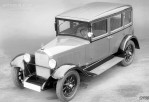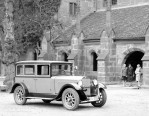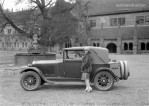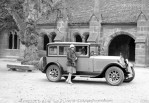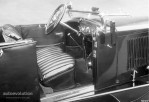Segment: Lower Premium
Production years: 1928, 1929, 1930, 1931, 1932, 1933
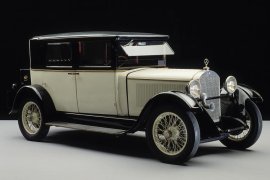 13 Photos
13 PhotosTwo years after the introduction of the 8/38 model, the automaker decided to create a more luxurious version for it that was launched in 1928: the Stuttgart version.
Mercedes & Cie and Daimler-Motoren-Gesselschaft (DMG) joined forces in 1926, forming Mercedes-Benz, the Typ 200 was their first joint project. So they made an affordable yet high-quality vehicle. Sales went through the roof during those times, and that made the carmaker dare a little bit more. Thus, in 1928, it launched the Stuttgart version, which was based on a longer chassis and provided more comfort, and was more luxurious than its 1926 model-year sibling.
Sporting the same front fascia as its shorter sibling, the Stuttgart version was available with an option for wire wheels instead of steel-artillery ones as its predecessor. From its sides, the longer wheelbase and chassis were used to provide more legroom for the rear-seated passengers. Thus, those who paid for the vehicle were happier with the car.
With a vast rear compartment and expensive materials, the 8/38 Stuttgart conquered its customers. The center-mounted instrument panel on the wooden dashboard and the four-spoke steering wheel were carefully crafted. The fit and finish were above the market's standards.
Even though the vehicle increased in size and weight, the automaker decided to keep the same powerplant and drivetrain as in the 1926 model year. This way, it kept the development's cost low. Its inline-six powerplant developed 38 PS (37 hp) from the two-liter displacement that it sent to the rear wheels via a three-speed manual with a floor-mounted gearstick.
MERCEDES BENZ 8/38 Typ Stuttgart 200 (W02) 1928, 1929, 1930, 1931, 1932, 1933
- 2.0L 3MT (38 HP)
MERCEDES BENZ 8/38 Typ Stuttgart 200 (W02)
2.0L 3MT (38 HP)
ENGINE SPECS - 2.0L 3MT (38 HP) | |
|---|---|
| Cylinders: | L6 |
| Displacement: | 1988 cm3 |
| Power: | 28 KW @ 3400 RPM 38 HP @ 3400 RPM 38 BHP @ 3400 RPM |
| Torque: | 77 lb-ft @ 1400 RPM 104 Nm @ 1400 RPM |
| Fuel System: | Carburetor |
| Fuel: | Gasoline |
PERFORMANCE SPECS | |
|---|---|
| Top Speed: | 50 mph (80 km/h) |
TRANSMISSION SPECS | |
|---|---|
| Drive Type: | Rear Wheel Drive |
| Gearbox: | 3-speed manual |
BRAKES SPECS | |
|---|---|
| Front: | Drums |
| Rear: | Drums |
TIRES SPECS | |
|---|---|
| Tire Size: | 5.25-20 |
DIMENSIONS | |
|---|---|
| Length: | 172.4 in (4379 mm) |
| Width: | 66.1 in (1679 mm) |
| Height: | 70.9 in (1801 mm) |
| Front/rear Track: | 56.1/56.1 in (1,425/1,425 mm) |
| Wheelbase: | 110.6 in (2809 mm) |
WEIGHT SPECS | |
|---|---|
| Unladen Weight: | 2535 lbs (1150 kg) |
| Gross Weight Limit: | 4078 lbs (1850 kg) |
FUEL ECONOMY (NEDC) | |
|---|---|
| Combined: | 15.7 mpg US (15 L/100Km) |
| CO2 Emissions: | 357 g/km |

